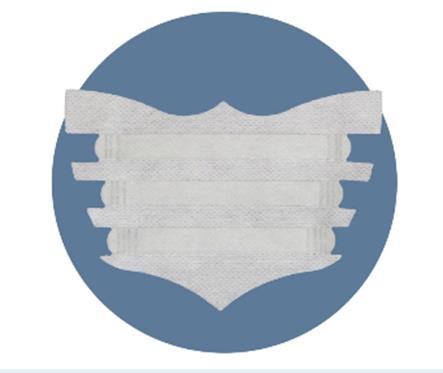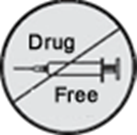|
How FLAIR® Strips Work FLAIR® Strips are a drug-free horse health product. The self-adhesive strips enhance equine health by gently holding open your horse’s nasal passages during physical exercise. The Strips have a spring-like action that opens and supports nasal passages while the special adhesive, which is designed to resist sweat and dirt, hold the strip firmly and comfortably in place. Clinical studies have found that FLAIR Strips support nasal passages to reduce collapse. By reducing nasal passage collapse, your horse expends less energy to get the oxygen he needs. FLAIR Strips support the soft tissues above the nostrils and in front of the nasal bone that collapse readily when you squeeze the area with your fingers. |



FLAIR® Equine Nasal Strips Reduce Fatigue and Improve Respiratory Health in HorsesFLAIR Strips are self-adhesive strips that promote optimum respiratory health of equine athletes at all levels by reducing airway resistance and providing improved airflow when your horse needs oxygen most. FLAIR Strips provide benefits for all horses including intensively trained horses as well as for horses that only exert themselves during occasional weekend competitions or trail rides. During exercise when horses begin to breathe hard the soft tissues overlying the nasal passages are sucked in, reducing the airway diameter. This reduction in diameter causes greater resistance to airflow into the lungs. FLAIR Strips gently support the soft tissues over the nasal passages providing reduced airway resistance during exercise. By reducing airway resistance during exercise, FLAIR Strips help prevent fatigue related injuries, help protect the lungs from injury and bleeding and promote optimal athletic performance. |


The Benefits of Breathing EasyBreathing Easy: A Key to Equine Performance and Health
The equine respiratory system can be a major cause of poor performance or premature retirement from competition. Let’s look at some of the key factors: THE NOSE: Horses are “obligate nasal breathers” which means that during intensive exercise the nose is the only way air reaches the lungs. A significant portion of the horse’s nasal passage is unsupported by bone or cartilage. This portion of the nasal passage collapses in all horses when breathing in during exercise — reducing the size of the airway and greatly increasing resistance to airflow. At rest, Over 50% of resistance to air flow comes from the nasal passages. This percentage increases to 80% during exercise. In addition, pathological upper airway obstructions (for example roarers or gurglers) and functional obstructions (significant head flexion) create additional increases in the work of breathing. This makes it more difficult to move air to the lungs.
· THE LUNGS: Resistance to airflow and high pulmonary blood pressure are known to cause lung bleeding. The lung tissue that separates the airways from the blood vessels is extremely thin- 1/100th the thickness of a human hair. This ultra-thin membrane makes for efficient oxygen and carbon dioxide transfer, however, it also makes the membrane very fragile and it can rupture when exposed to high blood pressures and the enormous suction-like airway pressures generated during intensive exercise. This is referred to as exercise induced pulmonary hemorrhage (“EIPH”). Numerous studies show that essentially all exercising horses experience some degree of EIPH during intensive exercise. However, less than 5% of these horses show blood at the nostrils. Symptoms of EIPH may include poor performance, coughing, extended cooling-out, and frequent swallowing. Moreover, each incidence of EIPH contributes to scar tissue formation and further bleeding. The lung damage from repeated episodes of EIPH can shorten a horse’s competitive career. · BREATHING AND STRIDE: Horses are unique in that at the gallop, breathing and stride are linked. Horses take a single breath with each stride. At speeds beyond a hand gallop, a horse increases its speed by increasing stride length, not by moving their legs faster. When the horse lengthens its stride to increase speed, it also takes deeper, longer breaths providing the lungs with more air. A horse struggling to move air in and out of the lungs may shorten its stride and fatigue quicker. Conversely, when a horse breathes easier, stride adjustability or lengthening is easier. THE SCIENCE: FLAIR® Equine Nasal Strips are scientifically proven to make breathing easier. (Abstracts of clinical studies are available on our website.) The drug-free Strips adhere to horses’ noses, providing a spring-like force that gently supports the nasal passages and reduces soft tissue collapse during exercise. There are no negative side effects to horses wearing Strips. The Strips are recommended in numerous veterinary textbooks to reduce EIPH and are proven to reduce airway resistance, EIPH, fatigue and help horses recover quicker after exercise.
|